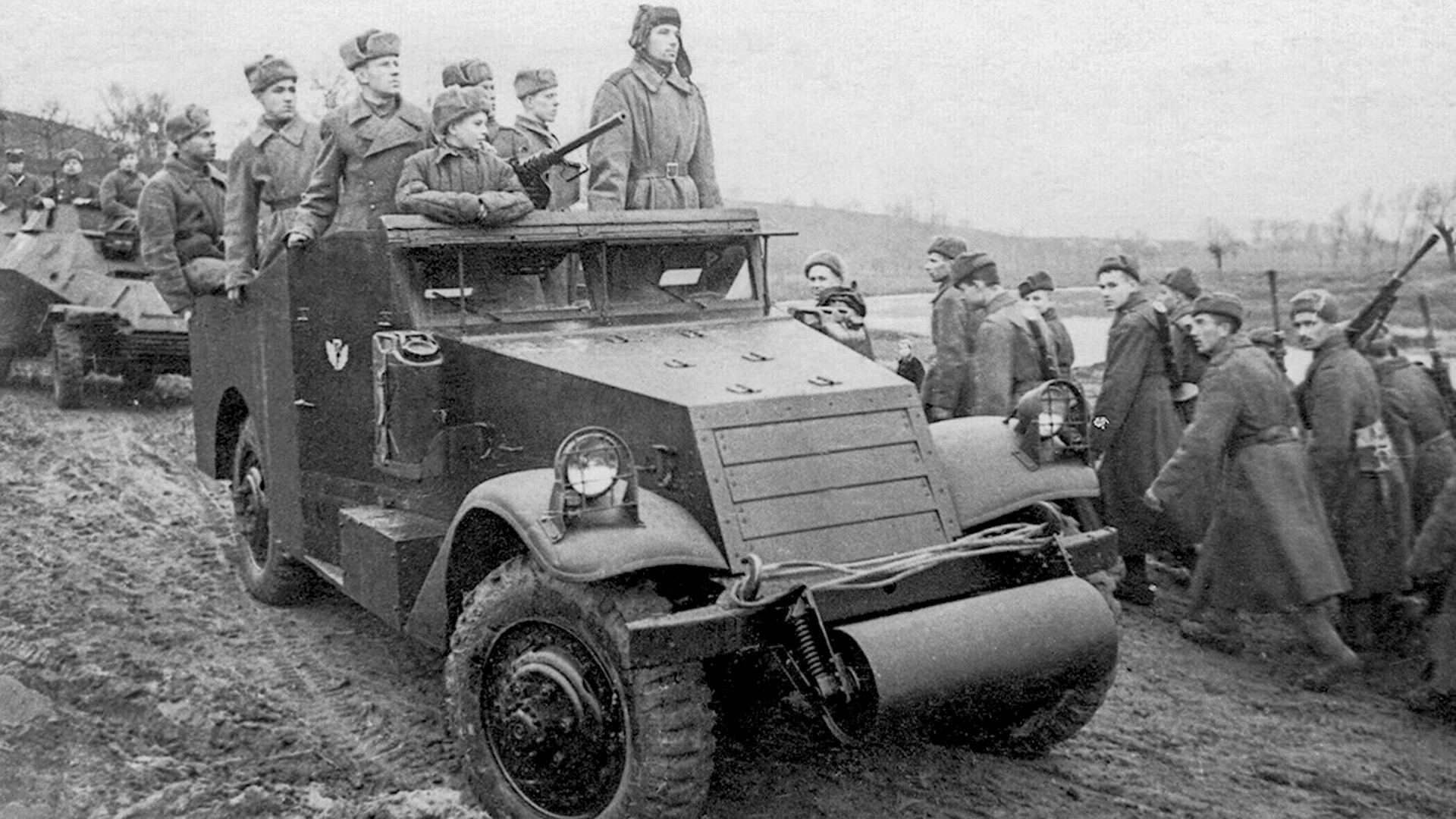
M3A1 'Scout' armored personnel carrier.
Arkady ShaikhetIn the pre-war years, the USSR had not produced any armored personnel carriers in any mass quantity and the country entered the war against the Third Reich, for the most part, without them. This is when the Western allies came to the rescue.
The U.S. and Great Britain supplied the Soviet Union with more than 6,000 armored personnel carriers. About a thousand of them were half-tracked M2s, M5s and M9s.
Only a small part of the half-tracked armored personnel carriers went to the armored and mechanized units of the Red Army. The rest became towers of artillery guns.
A somewhat different fate awaited the British ‘Universals’ and American M3 ‘Scouts’. They were to actively fight on the battlefield.
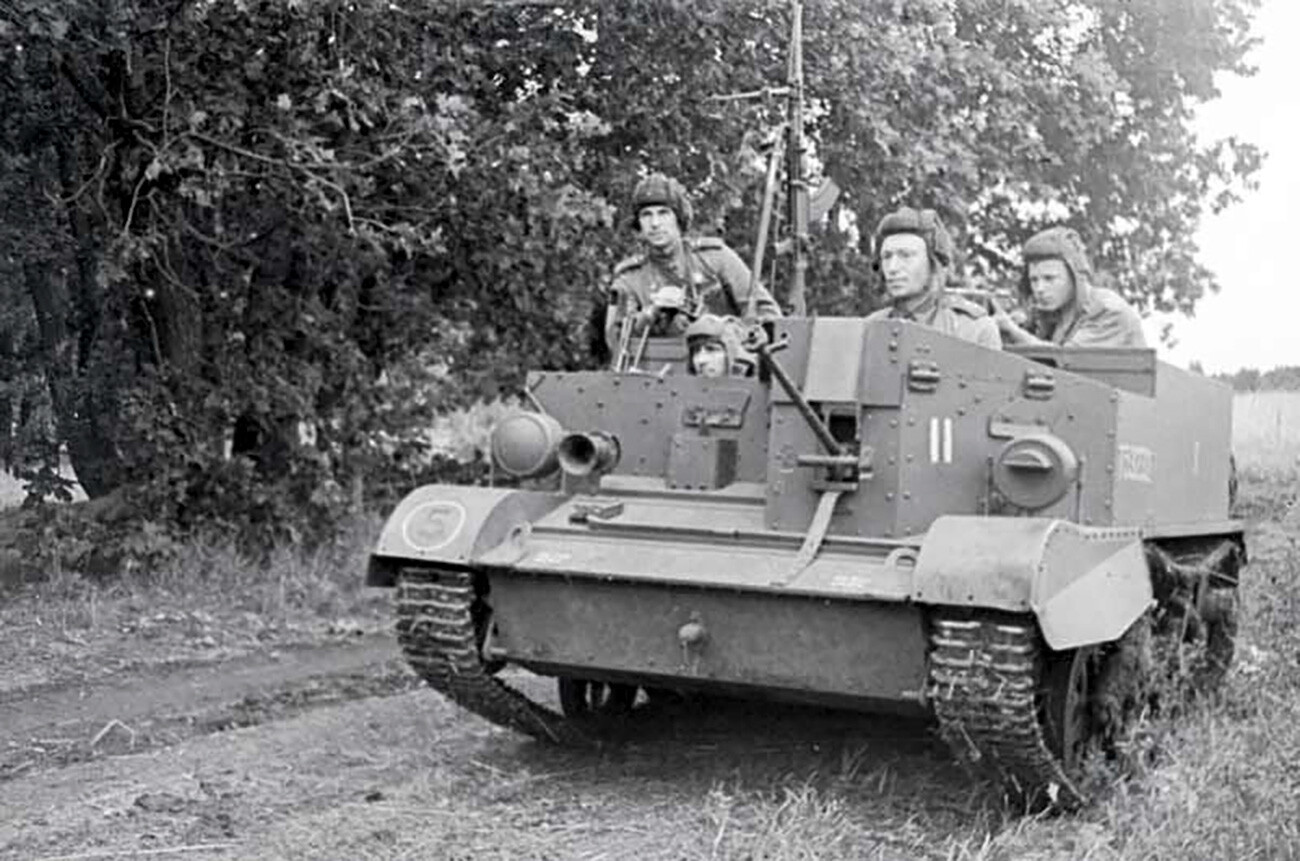
‘Universal’ armored personnel carrier.
Archive photoThe main armored personnel carrier of the armed forces of Great Britain and the Commonwealth countries could carry a troop of up to five people, was equipped with a 7.7-mm or 13.9-mm machine gun and had a highway speed of up to 48 km/h. The USSR received more than 2,000 of these combat vehicles during the war.
During the first half of the war, the tracked ‘Universals’ were mainly used for intelligence and reconnaissance. Toward the end of the conflict, they began to take an active part in combat operations.
Soviet machine gunners on armored personnel carriers caught up with retreating German columns, pouring fire and pelting them with grenades. “I remember chasing the Germans on them, crushing them on those armored personnel carriers there…” Anatoly Kozlov, a communications officer, shared.
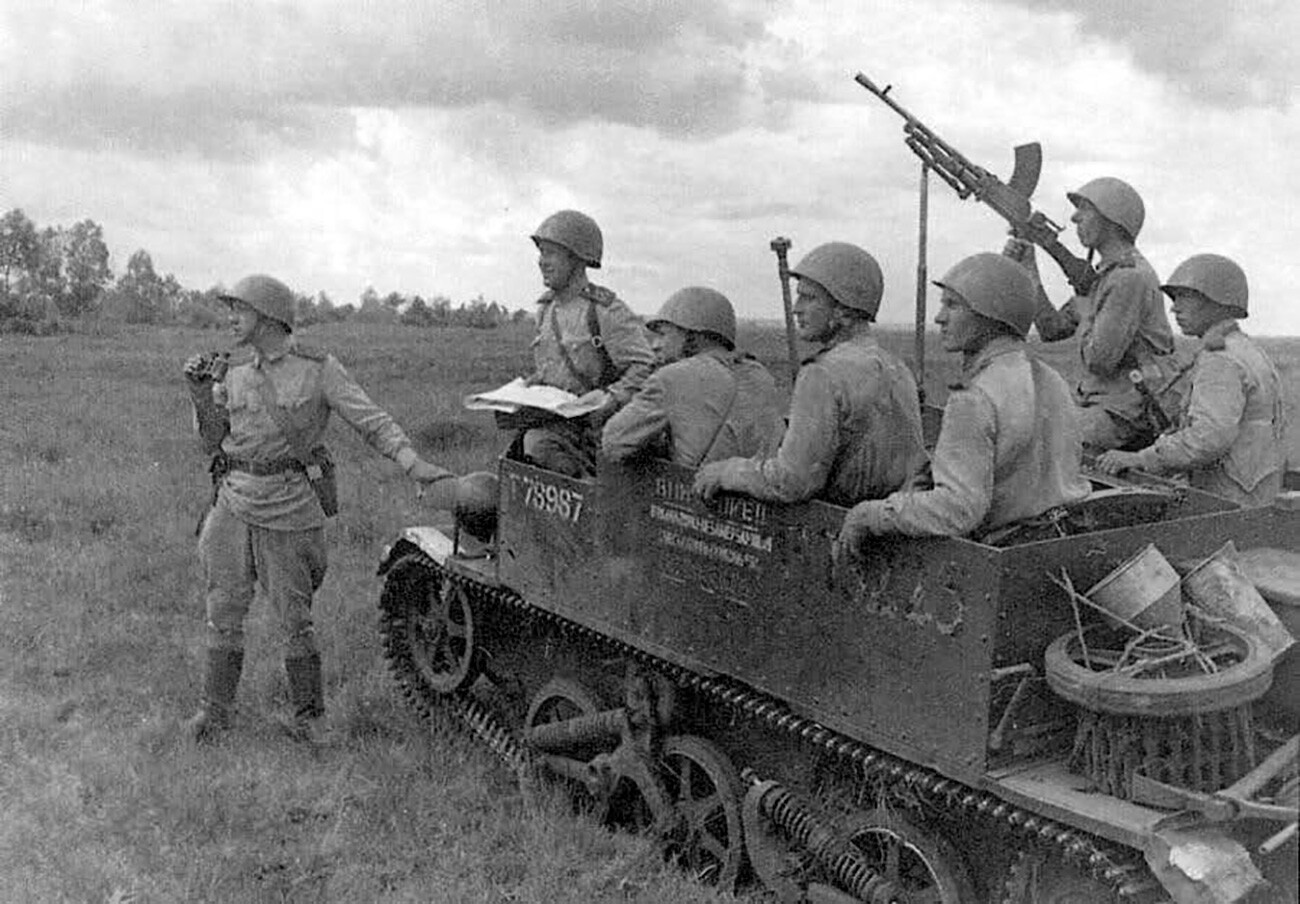
Yet, according to Soviet soldiers, the British fighting vehicle had many disadvantages: poor cross-country mobility (especially in winter), rapid wear and tear of the undercarriage, poor armament and protection for the crew and the troops. Even bending down, the soldiers remained vulnerable to bullets and shrapnel.
The troop compartment itself was quite cramped and, besides, in the middle of it was the engine hood, on which the soldiers rested their knees. In the hot season, it was extremely difficult to stay there. On the other hand, in winter, such a design came in handy and the commander and driver, who were in the front part of the ‘Universal’, would climb into the troop compartment to warm up during stops.
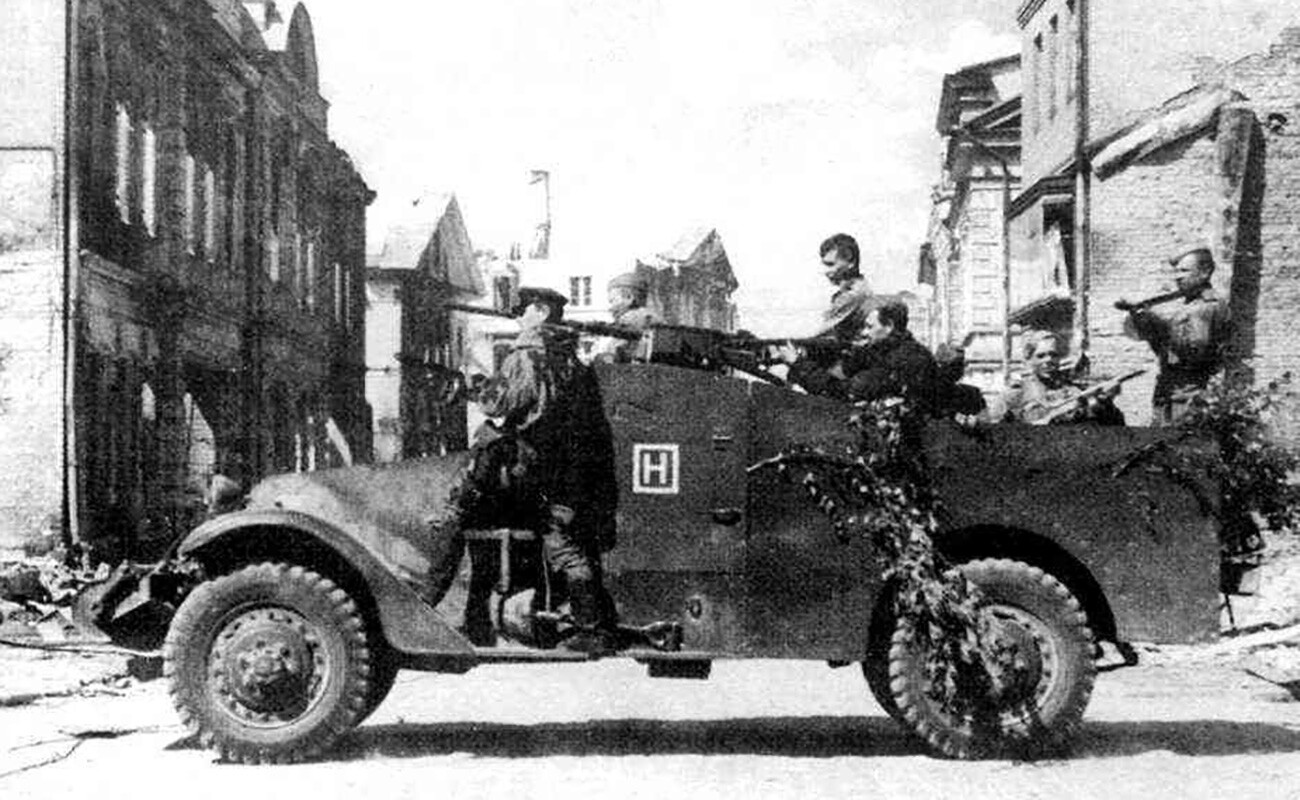
M3A1 'Scout' armored personnel carrier.
Archive photoThe American M3A1 ‘Scout’ wheeled armored personnel carrier was superior to its British counterpart in terms of combat performance. It was armed with 12.7-mm and 7.62-mm machine guns, could carry up to seven troops and could reach speeds of up to 81 km/h on paved roads (it was worse on rough terrain).
The Red Army had more than 3,000 ‘Scouts’ in total. Like the ‘Universals’, they served mainly as reconnaissance vehicles at the beginning of the war. In addition, they were often used to transport the wounded or to move staff officers.
Later, thanks to their powerful armament and good visibility, American armored personnel carriers proved to be great in street battles. Swiftly breaking through to an occupied house, they effectively suppressed any resistance with their firepower.
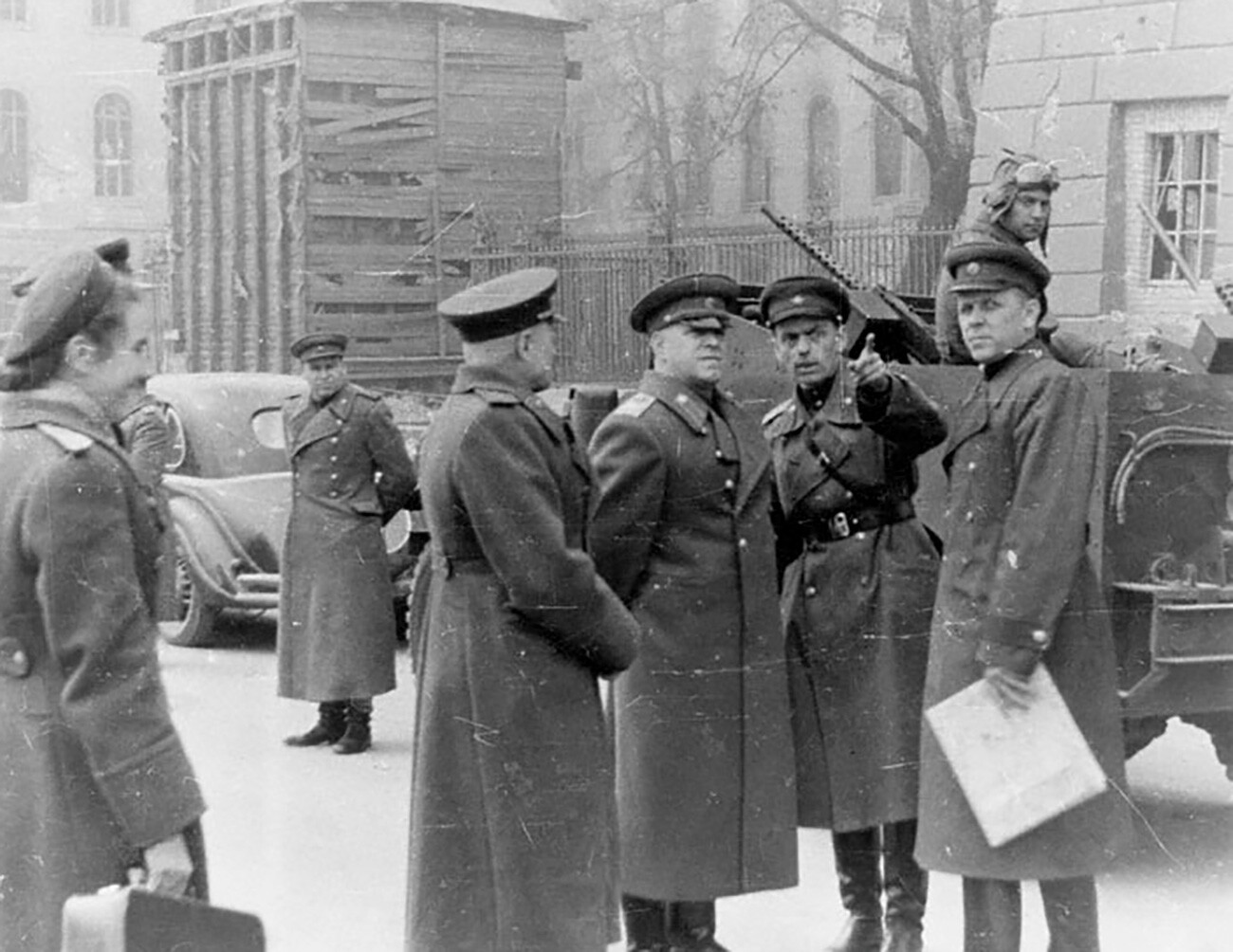
Marshal Georgy Zhukov guarded by a 'Scout' in Berlin.
Viktor TeminThe command often used high-speed ‘Scouts’ in order to disrupt the enemy’s escape routes, capture important crossings and hold them until the main forces arrived. Also, American armored personnel carriers were often trusted to guard the vehicles of major Soviet military commanders.
Unlike the ‘Universal’, the Red Army had almost no complaints about reliable and comfortable M3A1 vehicles. Therefore, it is not surprising that the BTR-40, the first Soviet mass-produced armored personnel carrier, developed in the late 1940s, was inspired by the ‘Scout’ in particular.
If using any of Russia Beyond's content, partly or in full, always provide an active hyperlink to the original material.
Subscribe
to our newsletter!
Get the week's best stories straight to your inbox